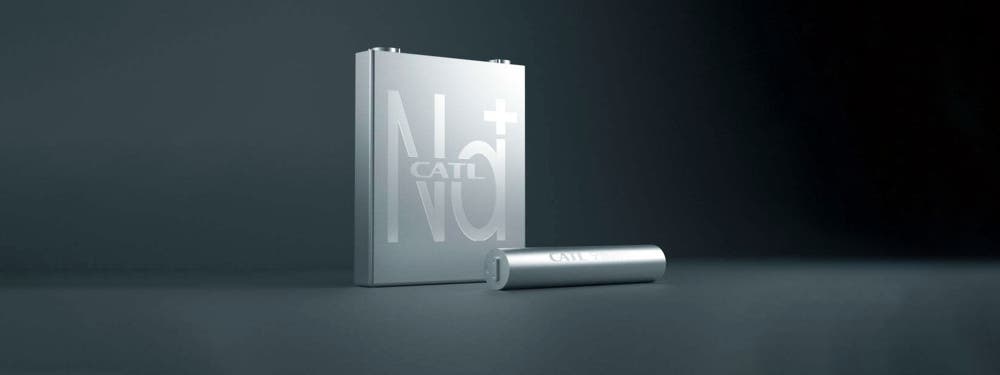
China’s Contemporary Amperex Technology Co. (CATL) is the world’s uncontested leader in lithium-ion batteries, providing products to Tesla, Volkswagen, BMW, and just about every important name in the electric vehicle (EV) space. But despite its market position, CATL is looking towards the future. The trillion dollar company just unveiled a new sodium-ion battery that is significantly cheaper than lithium-ion power packs, which may perhaps alleviate supply chain pressure and accelerate the transition of road transportation away from dirty fossil fuel-powered cars.
Lithium, the lightest metal and the least dense solid element in the periodic table, is phenomenally good for storing energy thanks to its high electrochemical potential. The combination of high reactivity, low mass, and seamless back and forth transfer of ions and electrons between positive and negative electrodes makes lithium-ion batteries amazing for powering electric vehicles.
However, lithium comes at a high cost, both financially and for the environment. Although the cost of lithium-ion batteries has dropped by 97 percent since they were first commercially introduced in 1991, mining lithium remains expensive and as demand increases as more and more auto companies transition towards EVs, demand is expected to skyrocket. From a supply chain standpoint, lithium is also relatively rare, being mined in a handful of countries such as Australia, Chile, China, and Argentina.
In South America, demand for lithium is causing water shortage problems. More than half of the world’s supply of the light metal lies beneath the otherworldly salt flats that cover parts of Argentina, Bolivia, and Chile, aptly named the Lithium Triangle. It takes about 500,000 gallons (1.9 mil. liters) of water to extract a ton of lithium, which is quite unbearable for communities close to the mines, many of which are located in the driest places on Earth.
Sodium, on the other hand, is much cheaper, easier to extract, and about 1,000 times more abundant than lithium, writes FreeThink. What’s more, the risk of a sodium-ion battery catching fire is basically zero, unlike the batteries that currently power your phone or Tesla. They also operate at a wider temperature range, which may make them more appealing for certain applications than conventional lithium-ion products.
With its new sodium-ion battery, CATL doesn’t seek to replace its lithium-ion products but rather supplement them in order to ease the pressure on lithium demand. According to the company, its first-generation sodium-ion batteries can reach an energy density of 160 watt-hours/kilogram, which may improve to 200 Wh/kg in subsequent generations. For comparison, Tesla’s Model 3 has an energy density of 250 Wh/kg.
The lower energy density and higher mass means that a sodium-ion battery-powered EV will have a much lower range than a lithium-ion-powered one. This is why CATL decided to launch a hybrid battery that integrates both sodium-ion and lithium cells in one case.
So while sodium-ion batteries won’t completely solve our lithium shortage problems, they could dramatically influence the market by taking a massive load off the demand. Ultimately, sodium-ion batteries could play a major role in accelerating EV adoption going forward.









